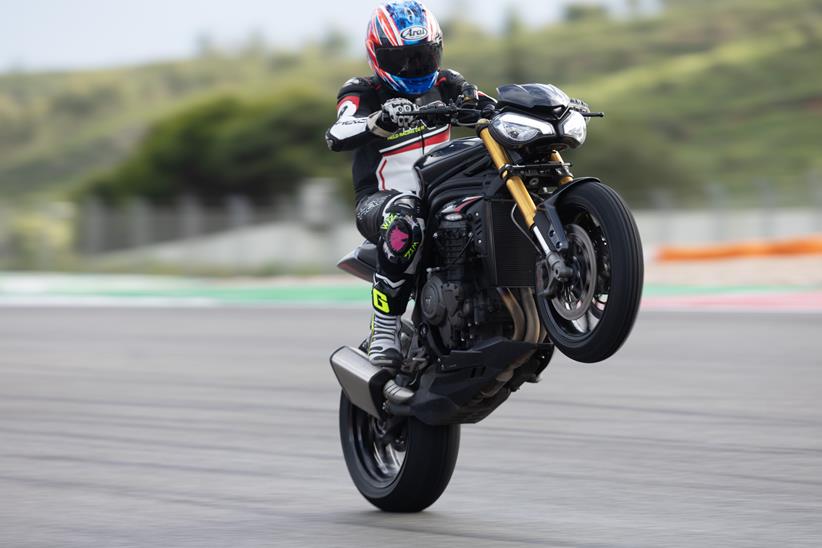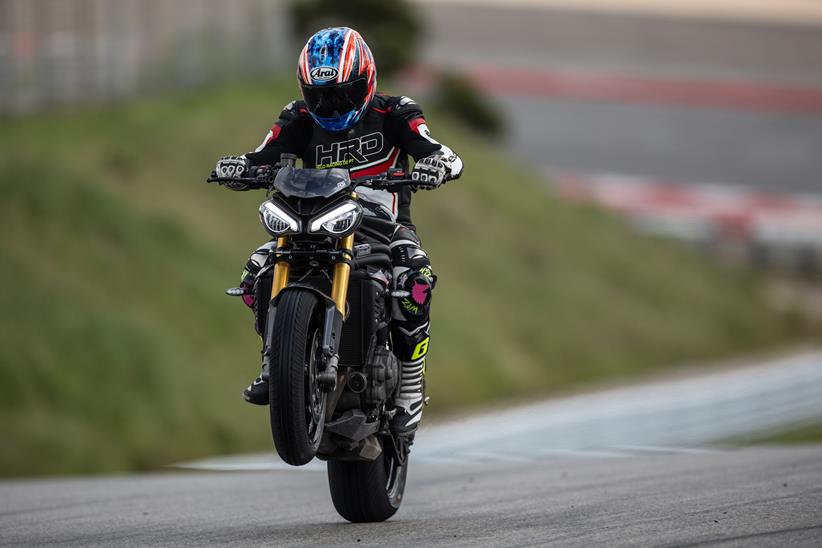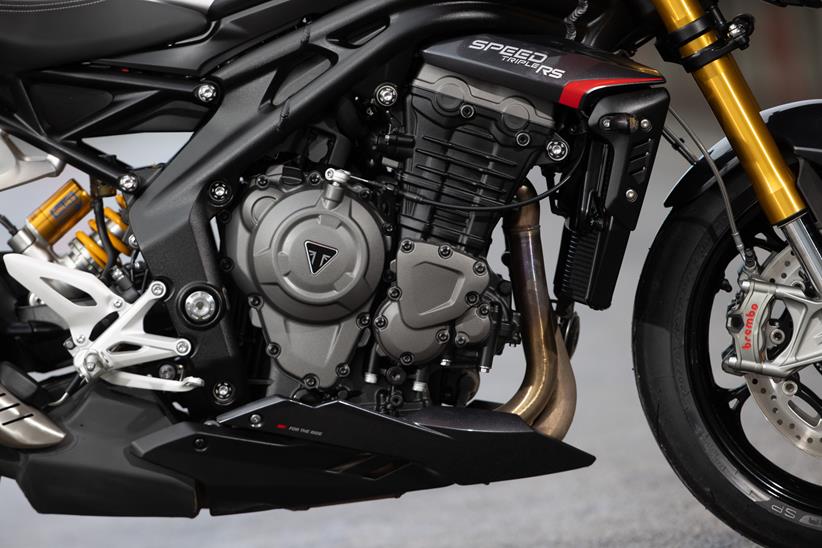Advanced wheelie electronics on Triumph's Speed Triple 1200 RS turn you into a (safe) stunting hero
Triumph have launched a new Speed Triple 1200 RS for 2025. Priced at £17,495 on the road, it now makes a claimed 180.5bhp at 10,750rpm and 94.5lb.ft of torque at 8750rpm – and is gunning for this year’s super-naked crown.
On top of the creep in performance, the electronics have had a tweak, including a new separate function wheelie control system, which helps the bike achieve a controlled lift without risk of looping you over the back in an expensive accident.
Selected via the back-lit switchgear and five-inch colour TFT dash, it’s capable of turning even the most timid of wheelie enthusiasts into an impressively precise stunt rider, whilst also ironing out wheelies where required for faster acceleration on track.
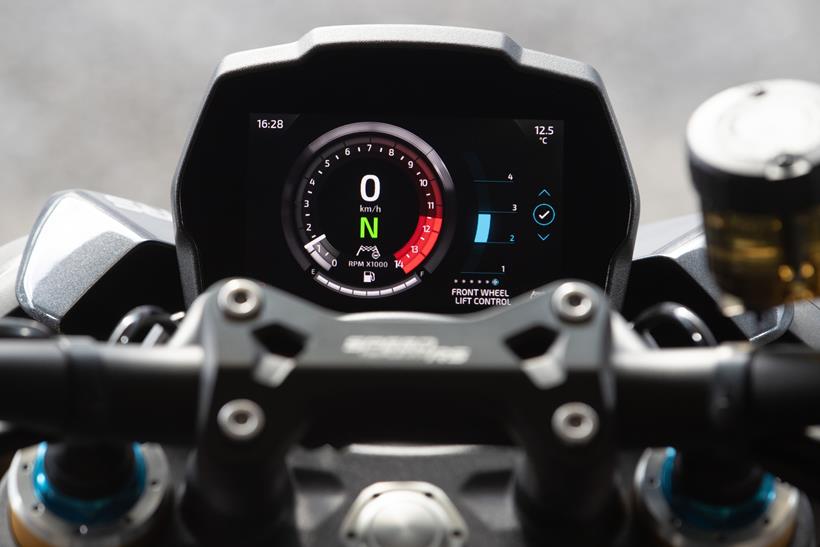
The functionality gets four stages of lift – with level one allowing the front wheel to hover just above the ground for maximum forward drive. This gently increases to level four, which uses a number of data points to maintain a controlled precision wheelie at around 60cm.
“You can actually see it as a byproduct of a performance aid,” Triumph’s Chief Engineer, Stuart Wood told MCN. “Over the years our traction control systems have had front wheel lift control in different ways, and it’s become more sophisticated, more refined, and the last generation was already using the Inertial Measurement Unit (IMU).”
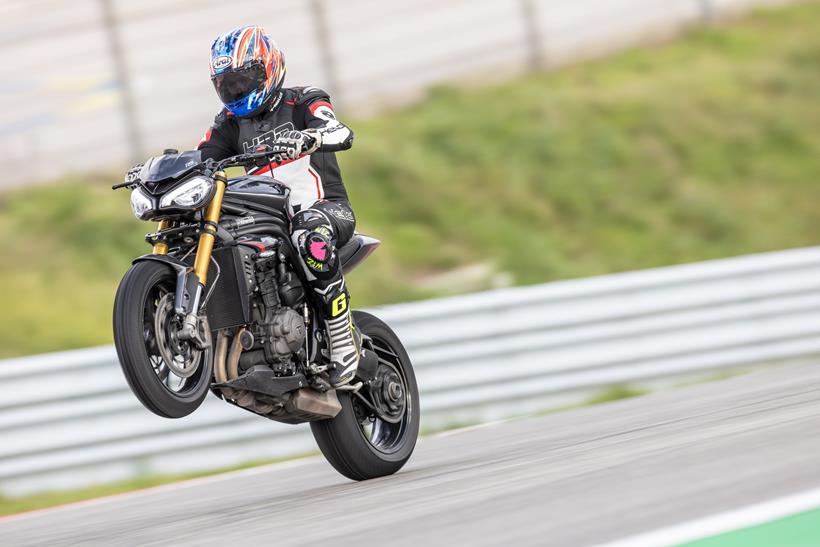
The system does not involve cutting the ignition to reduce the wheelie and is designed to feel as natural as possible.
“We’ve been evolving our traction control methodologies and we’ve actually got to the point where we feel comfortable giving the rider a selectable maximum height that the front wheel lifts to,” Wood continued.
“The wheelie is still completely under the control of the rider – certainly initially – but as you approach the limit that the rider has selected, the system will both make it easier for the rider to control it but will stop you going any further.”
In simple terms, in mode four a rider can pin the throttle and let the front wheel rise. You can keep the throttle pinned and continue to throw gears at it to maintain the wheelie, without the need to ping the clutch or touch the rear brake – the onboard algorithms do the hard work for you.
Triumph say that more than 20 parameters are being measured or used at all times, with updates provided at 100 times a second. The information gathered by these data points, combined with the settings selected, allow the bike to work out what you want to do and then facilitate it.
The six-axis IMU is essential, and the lift control could not be achieved without it. Measuring the bike’s pitch, roll and yaw, it knows the angle of the machine at all times.
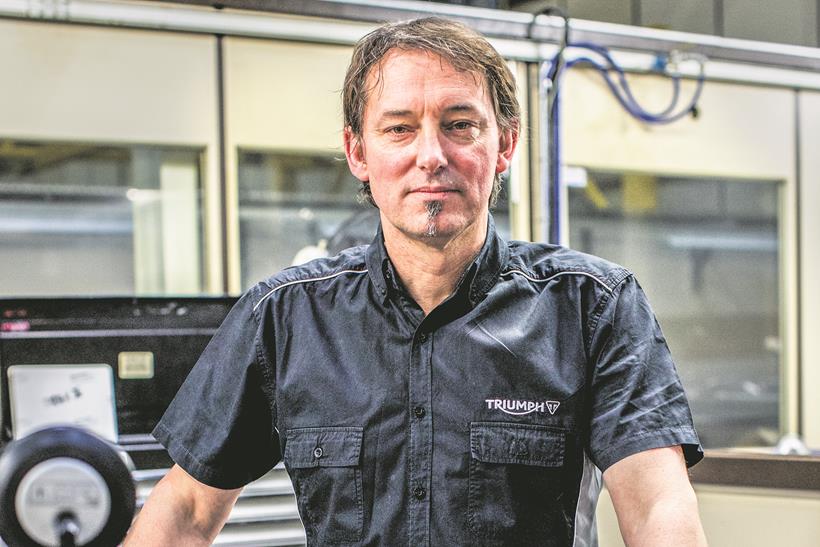
Wheel speed is measured, as well as throttle position, and more to make sure that the correct amount of power is provided to maintain the appropriate degree of wheelie.
No rear brake is being applied here. Instead, the ride-by-wire throttle works with the butterflies to feed in the appropriate amount of power (known as torque targeting) with changes made at 100 times a second.
So, you could be at 58cm of lift, twist the throttle as hard as you can, and you’ll only get enough oomph to reach the desired rise – rather than sending you off the back.
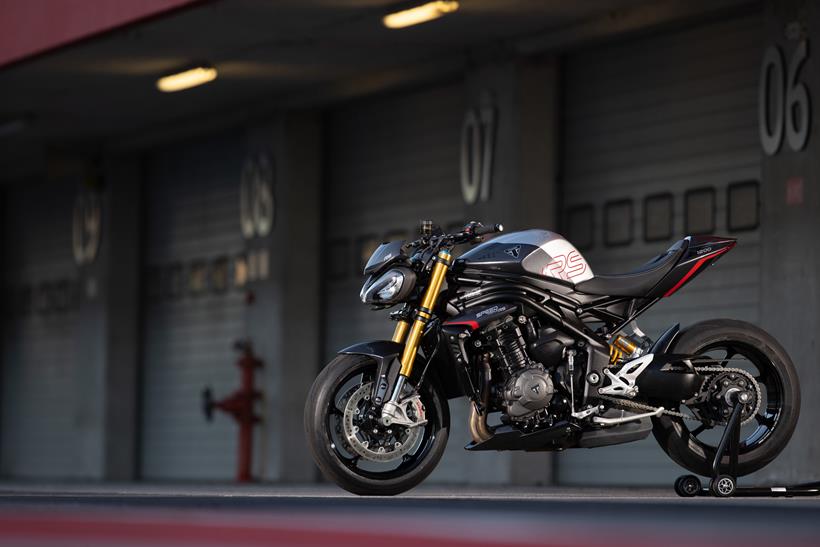
It knows what gear you’re in, what the engine’s doing, and the rate of angle change from the IMU. The engineers have also taken into account the aerodynamic effect of travelling at high speed with the front wheel raised.
“You’re going to have to control that lift somehow and you can choose whether you keep that front wheel just hovering, or whether you let it lift that little bit higher,” Wood added. “The motivation is twofold – you can do it for fun, or you can do it to maximise acceleration, the system just aids your performance.”
